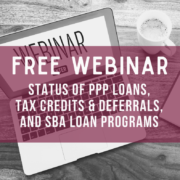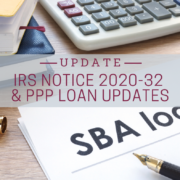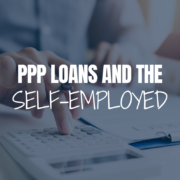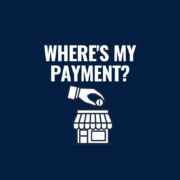The Coronavirus Aid, Relief, and Economic Security (CARES) Act, and similar measures taken by countries around the world, will have significant impacts on companies’ financial reporting. There are many accounting areas that entities will need to evaluate to determine if adjustments to the financial statements are required or whether additional disclosures are necessary. This is particularly true of accounting for income, taxes and potentially forgivable loans. The following descriptions highlight some of the key financial statement areas that are impacted by the CARES Act to date, pending additional guidance from the federal government and standard setters on implementing the relief provisions:
Download a printable PDF of this information by clicking here!
Highlights of the CARES Act for qualifying entities (FDIC-insured banks and credit unions):
- Section 4013 of the CARES Act provides the option to not apply ASC 310-40 (TDRs) to a loan modification related specifically to COVID-19 hardships, including the flexibility to not classify the loan as impaired for accounting purposes.
- Section 4014 of the CARES Act provides optional temporary relief from being required to comply with ASU 2016-13, including the CECL method for estimating allowances for credit losses. For calendar year-end public companies, the election of the deferral must be made in the Form 10-Q for the first quarter of 2020 and would be effective as of January 1, 2020.
- Section 4012 of the CARES Act directs federal banking regulators to issue an interim rule lowering the Community Bank Leverage Ratio (CBLR) from 9% to 8%, which would be effective until the national emergency is lifted or the end of the 2020 calendar year, whichever comes first.
- Section 4008 of the CARES Act authorizes the FDIC to guarantee debt issued by banks in excess of the $250,000 limit, effectively reviving a program that was enacted during the 2008 financial crisis.
Highlights of the CARES Act for financial institutions and specialty finance entities:
- For income tax reporting, the effects of the CARES Act should be recognized in the period of enactment (Q1 2020 for calendar year issuers). Careful consideration should be given to the projections being used for the Annualized Effective Tax Rate (AETR) criteria for the discrete treatment of items versus inclusion in the AETR computation, as well as the impact of ASU 2019-12 and ASU 2017-4.
- Adjustment to the 2018, 2019 and 2020 net operating loss carryback period from zero to five years and removal of the 80% taxable income limitation for the portion of the respective net operating loss utilized before 2021 are provisions in the CARES Act that may trigger tax accounting implications for financial institutions.
- Section 4011 of the CARES Act authorizes the OCC to temporarily waive the limit on lending by national banks to non-bank financial firms, effective until the national emergency is lifted or the end of the 2020 calendar year, whichever comes first.
Troubled Debt Restructurings:
Section 4013 of the CARES Act provides qualifying entities, insured deposit institutions and credit unions with the option to forgo applying ASC 310-40 to a loan modification related specifically to COVID-19 hardships, including the flexibility to not classify the loan as impaired for accounting purposes. In its April 3, 2020, statement, the SEC clarified that an election to waive application of ASC 310-40 to qualifying entities and loan modifications as described in the CARES Act would be in accordance with GAAP. Therefore, the provisions of Section 4013 for troubled debt restructurings (TDRs) can be applied to both public and private entities that meet the scope described in the CARES Act.
The following are characteristics of loans that are eligible for the Section 4013 TDR relief:
- Not more than 30 days past due as of December 31, 2019;
- Qualifying Modification made between March 1, 2020, and ending on the earlier of December 31, 2020 or 60 days after the president terminates the National Emergency issued on March 13, 2020; and
- Qualifying Modification applies to forbearance agreements, interest modifications, repayment plans and any other similar arrangement that defers or delays the payment of principal or interest.
However, the relief does not apply to borrowers experiencing financial difficulty where concessions may be granted that are not related to COVID-19. We believe the law is to be applied as written and is not to be interpreted or analogized to other situations. For example, a borrower that is delinquent at 12/31/2019 and becomes current before March 1, 2020 is not eligible for Section 4013 election.
On April 7, 2020, the banking regulators issued an Interagency Statement on Loan Modifications and Reporting for Financial Institutions Working with Customers Affected by the Coronavirus (Revised) (“Statement”). The Statement includes a discussion on Section 4013 of the CARES Act and clarifies guidance in the Interagency statement issued on March 22, 2020. Loans that do not meet the criteria in Section 4013 should be evaluated as to whether the modified loan is a TDR in accordance with ASC 310-40.
The Statement notes that working with current borrowers on existing loans as part of a program, or individually for creditworthy borrowers experiencing short-term financial or operational issues due to COVID-19, would generally not be considered a TDR. The FASB agreed with these interpretations.
No further TDR analysis is required when the following conditions are met:
- The modification is in response to the COVID-19 national emergency;
- The borrower was current (i.e., less than 30 days past due) on its contractual payments at the time the modification program is implemented; and
- The modification is short term (six months or less).
The Statement includes the following example modifications as meeting the above expedient:
- Payment deferrals;
- Fee waivers;
- Extensions of repayment terms; and
- Delays in payments that are insignificant.
The Statement also notes that government-mandated modification or deferral programs related to COVID-19 are not in the scope of ASC 310-40. The Statement uses the example of a state program that requires mortgage payment suspension for a specified period of time. The Statement also clarifies that deferrals granted due to COVID-19 should not be reported as past due and/or placed on nonaccrual status because of the deferral, and therefore would not result in a charge-off at that time. However, if additional information becomes available indicating a loan will not be repaid in whole or in part, banks should consider whether the loan is impaired and keep in mind their charge-off policies and the regulatory charge-off guidance.
We have interpreted “at the time a modification program is implemented” to mean when a program is implemented by the institution, and not at the time the specific loan modification occurred.
Note that while Section 4013 is available only to certain private and public entities (e.g., insured deposit institutions, bank holding companies, and affiliates), the Statement is an interpretation of GAAP. As such, entities outside the scope of Section 4013 of the CARES Act (e.g., public and private non-bank financing companies) can also apply the interpretive guidance in the Statement.
Allowance for loan loss considerations:
Loan modifications that are not deemed to be TDRs are also not deemed to be impaired due solely to the modification. Therefore, entities that have not yet adopted ASC 326 (CECL), should first determine if there are other indicators of impairment as noted in ASC 310-10-35 that would require individual credit impairment evaluation. If the loan is not deemed to be impaired, it should be accounted for in accordance with ASC 450. Entities that have adopted CECL will need to evaluate the impact on the loans’ contractual terms, among other considerations.
It’s critical that management considers whether the ALL model assumptions should be updated. For example, due to the widespread deferral programs being implemented, loans will not “track” as past due. If past due reports are usually a significant factor in the ALL model, they may no longer be useful indicators and other data may be considered. Additionally, since loans may appear to be performing, this may have an impact to the loss emergence period (e.g. increasing emergence period).
Interest income recognition on loans with payment deferrals:
At its April 8, 2020, meeting, the FASB staff discussed a technical inquiry where a creditor provided a loan payment deferral to a borrower during which it also waived the accrual of interest. In the fact pattern presented, the loan modification did not represent a TDR under ASC 310-40 and was not accounted for as an extinguishment. Rather, it was considered a continuation of the existing loan. This raises the question as to whether the creditor should establish a new effective interest rate in accordance with ASC 310-20 and continue to recognize interest income during the holiday period, or if it should follow the contractual terms (i.e., not recognize interest income during the holiday period). The staff expressed its view that, in this situation, either method would be acceptable.
Loan servicing and bankruptcy remote securitization trusts:
Servicers of Ginnie Mae or Freddie Mac loan pools are required by the servicing agreements to remit the borrower’s scheduled principal and interest payments to the investors. When borrowers do not make a payment, the servicer advances cash to make up for the difference between the scheduled principal and interest that is remitted to the investor vs. the actual principal and interest payments received from the borrower.
When loans are modified as described above, the borrower may not make payments for up to six months. This situation results in the servicer funding advances to Ginnie Mae and Freddie Mac as required by the servicing agreement, even though the borrower has not made a payment. Depending on the volume of modification activities carried out under the CARES Act or the Statement, there could be significant increases in advances for Ginnie Mae and Freddie Mac servicers.
Additionally, servicers of Ginnie Mae loans have the option to purchase loans out of pools when the borrower has not made payments for three consecutive months (referred to as an Early Pool Buyout, or EPBO). This option is provided to the servicer so that they can make the decision whether to continue to make advances for scheduled principal and interest payments (i.e., advancing cash at the loan pool’s coupon interest rate), or funding the loan using their own cost of funds (which may be less than the loan pool’s coupon interest rate). If the servicer was the transferor of the loan into the Ginnie Mae loan pool, this EPBO is a contingent removal of accounts provision that causes them to regain control over the transferred loan (regardless of whether the option to repurchase is exercised or not). In this situation, the transferor/servicer must account for the loans that are eligible for EPBOs, regardless of whether they actually exercise the option. This may cause a significant increase to the balance sheet of a servicer and may have regulatory capital implications.
The Paycheck Protection Program’s impact on financial reporting:
The Paycheck Protection Program (“PPP”) authorized federally guaranteed forgivable loans through the Small Business Administration (SBA) for qualifying small businesses to pay their employees during the COVID-19 crisis. Because the applications for PPP funding began on April 3, 2020, it’s important to note that, for businesses that received a loan, it’s a Q2 2020 event for financial reporting purposes. While we know that 100% of the principal balance is guaranteed by the SBA, there are several questions that regulatory authorities have not addressed at this time:
- How should the loans be classified on the balance sheet?
- Is interest guaranteed by the SBA?
- How should the origination fees received from the SBA be accounted for?
- How should income be recognized on these loans?
Other financial reporting considerations
Temporary Relief to comply with Current Expected Credit Losses (CECL):
Section 4014 of the CARES Act provides an optional temporary relief from being required to comply with ASU 2016-13, including the CECL method for estimating allowances for credit losses. That is, the CARES Act provides for an optional temporary deferral of the required adoption date of ASU 2016-13 until the earlier of the date when the president terminates the COVID-19 national emergency or December 31, 2020. However, the relief only applies to insured depository institutions, as defined in the CARES Act, bank holding companies and their affiliates. The effective date for other entities, including companies in the consumer and retail industry, manufacturing entities and other non-financial institutions, is not affected by the CARES Act.
For calendar year-end public companies, the election of the deferral must be made in the Form 10-Q for the first quarter of 2020 and would be effective as of January 1, 2020. In other words, the option to elect the deferral is not available after the first quarter. On the date that the deferral ends, the provisions of ASU 2016-13 would apply retroactively to January 1, 2020. For example, if the COVID-19 national emergency is declared over on November 5, 2020, ASU 2016-13 would be adopted on that date retroactively to January 1, 2020. If the COVID-19 national emergency is not declared over by December 31, 2020, ASU 2016-13 will be adopted on December 31, 2020 retrospectively to January 1, 2020. As such, reserves for loans existing at January 1, 2020 would be reflected in the cumulative effect adjustment to retained earnings, whereas reserves on loans originated during 2020 will be recognized through the income statement. All calendar year-end public companies (both those electing the deferral and those that do not) would report the adoption of ASU 2016-13 for the full year in their 2020 Form 10-K. During 2021, all 2020 quarters would need to be recast to assume ASU 2016-13 had been adopted as of January 1, 2020.
Considering that the deferred effective date is through an act of Congress, the SEC staff clarified in a public statement dated April 3, 2020, that they would not object to the conclusion that electing the deferral is in accordance with GAAP. Also, on March 27, 2020 (i.e., the effective date of the CARES Act), the Federal Reserve, the FDIC and the OCC issued a joint statement that addresses the interaction between CECL and the CARES Act for purposes of regulatory capital requirements. The joint statement provides an optional extension of the regulatory capital transition for the new credit loss accounting standard, with the issuance of an interim final rule that allows banking organizations to delay the estimated impact on regulatory capital stemming from the implementation of ASU 2016-13 for a transition period of up to five years.
For more information, the FDIC has released a “FAQ for Financial Institutions Affected by the Coronavirus Disease 2019,” including commentary on operational matters surrounding the ALL in the first quarter of 2020.
An excerpt of question 7 in the Operational Matters section has been included below:
First Quarter 2020 Allowance for Loan and Lease Losses or Allowances for Credit Losses. How should financial institutions with borrowers affected by the effects of COVID-19 determine the appropriate amount to report for their allowance for loan and lease losses (ALLL) or allowances for credit losses (ACLs), if applicable, in their first quarter regulatory reports?
For financial institutions that have not adopted FASB Accounting Standards Update (ASU) No. 2016-13, “Measurement of Credit Losses on Financial Instruments,” with loans to borrowers impacted by the effects of COVID-19, it may be difficult at this time to determine the overall effect that the situation will have on the collectability of these loans. Many of these financial institutions will need time to evaluate their individual borrowers, assess the repayment capacity, and other available sources.
For its first quarter regulatory reports, management should consider all information available prior to filing the report about the collectability of the financial institution’s loan portfolio in order to make its best estimate of probable losses within a range of loss estimates, recognizing that there is a short time between the beginning effects of COVID-19 and the required filing date for the first quarter regulatory report. Consistent with generally accepted accounting principles (GAAP), the amounts included in the ALLL in first quarter regulatory reports for estimated credit losses incurred as a result of the effects of COVID-19 should include those amounts that represent probable losses that can be reasonably estimated. As financial institutions are able to obtain additional information about their loans to borrowers affected by COVID-19, estimates of the effect of COVID-19 on loan losses could change over time and revised estimates of loan losses would be reflected in financial institution’s subsequent regulatory reports.
For financial institutions that have adopted FASB ASU No. 2016-13, with financial assets impacted by the effects of COVID-19, it may also be difficult at this time to determine the overall effect that the situation will have on the collectability of these assets. Many of these financial institutions will need time to evaluate their collective assessments on the net amount expected to be collected.
For its first quarter regulatory reports, management should consider all information available prior to filing the report about the collectability of the financial institution’s financial assets in order to make a good faith estimate on the net amount expected to be collected. Furthermore, management should ensure the measurement of expected credit losses includes forward-looking information, such as reasonable and supportable forecasts, in assessing the collectability of financial assets. The FDIC expects financial institutions to make good faith efforts to include its best estimate of expected credit losses within a range of expected loss estimates, recognizing that there is a short time between the beginning effects of COVID-19 and the required filing date for the first quarter regulatory report.
Consistent with generally accepted accounting principles (GAAP), the amounts included in the ACL in first quarter regulatory reports for expected credit losses as a result of the effects of COVID-19 should include those amounts that represent expected credit losses over the remaining contractual term of the financial asset, adjusted for prepayments. As financial institutions are able to obtain additional information about their financial assets affected by COVID-19, estimates of the effect of COVID-19 on credit losses could change over time and revised estimates of credit losses would be reflected in financial institution’s subsequent regulatory reports.
Income tax reporting considerations:
The effects of the CARES Act should be recognized in the period of enactment (Q1 2020 for calendar year issuers). Careful consideration should be given to the projections being used for the Annualized Effective Tax Rate (AETR) criteria for the discrete treatment of items versus inclusion in the AETR computation (e.g., direct and indirect impacts of carryback, change in tax law and movement in the valuation allowance), as well as the impact of ASU 2019-12 and ASU 2017-04.
- Book recognition of reserves, accruals and impairments related to COVID-19 will likely impact the recognition and measurement of temporary differences and related tax accounting. Accordingly, the following entity fact patterns may trigger material tax accounting implications that management may need to focus on:
- Impairments to book goodwill with or without an underlying tax basis.
- Impairments to book intangibles that have historically depended upon reversing taxable temporary differences related to the underlying book intangibles with no tax basis as a source of income to realize existing deferred tax assets.
- Adoption of ASU 2017-04.
- Material book adjustments (both individually and in aggregate) to areas outside of goodwill and intangibles to which the applicable tax accounting treatment would differ.
How We Can Help
In conclusion, while the COVID-19 pandemic has created significant uncertainty for financial institutions and specialty finance entities, the CARES Act provides some financial reporting and tax relief for those who know how to access it. To that end, CFOs and financial leaders can help their organizations on the path back to growth by leveraging all applicable CARES Act provisions in their accounting strategies, including having familiarity with all relevant financial reporting requirements and deadlines in order to maximize benefits. Our Financial Institutions Group is always here to help.


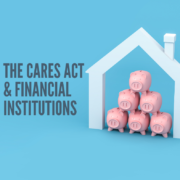
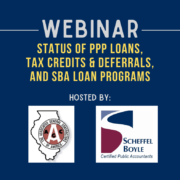
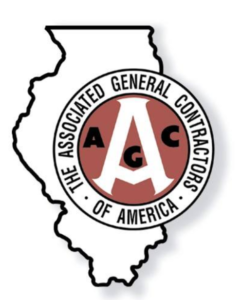 We are proud to partner with the
We are proud to partner with the 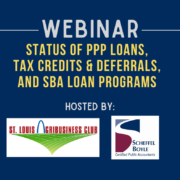
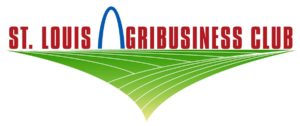 We are proud to partner with the
We are proud to partner with the 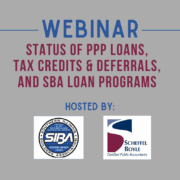
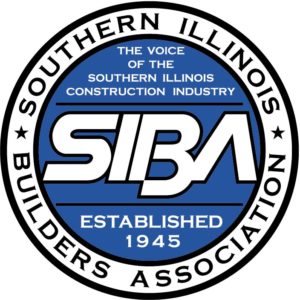 We are proud to partner with
We are proud to partner with 